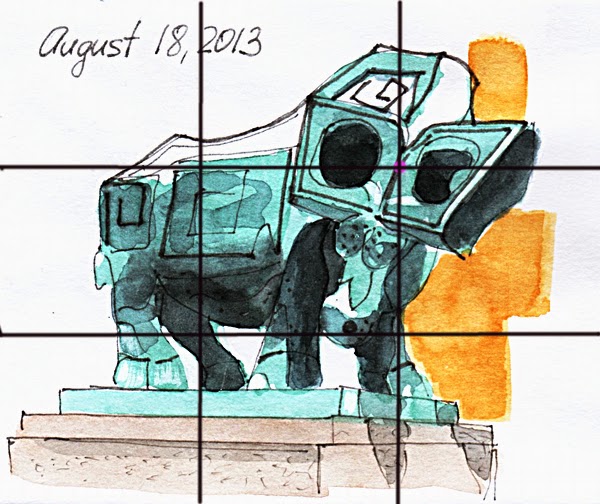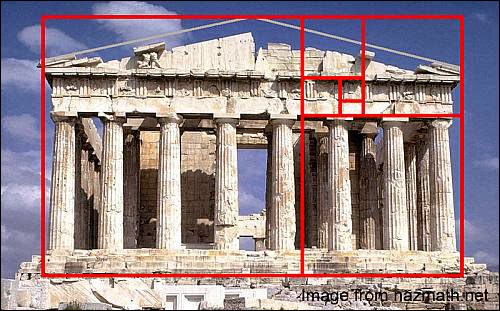Composition is a Big Word–PART TWO
By Alex Zonis
What if you have become so interested in composition that you want to dig deeper? No problem!
Here are more composition insights – Rules!
1. Rule of Thirds
The Rule of Thirds is an easy compositional rule to remember. Splitting an image in half vertically or horizontally produces a sketch with a point of interest squarely in the middle. This can be just a little bit boring.
Instead divide a page in thirds both horizontally and vertically, and place the focus of the sketch in one of the spots where the lines intersect. As a result a viewer eye is drawn to the strongest point in one of the intersections, then around the sketch following the lines of the object.
At first it may be helpful to draw the lines to divide the drawing in thirds and use them as an aid to find “sweet spots” as they are sometimes called. After some practice the lines will become unnecessary and you will just see where the strongest impact spot is. If you do thumbnail sketches first, draw the grid of thirds on top to check the composition.
2. Rule of Odds
How many of anything is included in a composition makes a difference. An easy thing to remember is that odd is better than even, an odd number make a composition more dynamic.
When there is an odd number of objects in a drawing, it is harder to pair them up, which we do subconsciously, and this means that a viewer will be looking at the drawing longer and keep their eyes moving within the drawing.
Of course if we are sketching in a sidewalk cafe and drawing four people sitting at a table in front of us, skipping one or inventing one extra may not be the best solution. Instead we can be creative and check for interesting reflections, or a shadow, or a pigeon!
There are 6 bottles in this drawing - an even number, but 3 strong and interesting shadows bring the number of shapes to 9.
3. Full range of values
For a good composition we want to have a full gamut of values in the image: from lightest lights to mid tones to darkest darks. If we have this variety of values, the drawing is already pretty good. For a really strong composition the lights, mid tones and darks need to be included in different amounts. Here’s a simple way to remember it: “two thirds, one third, and a little bit.” For example, “two thirds of dark, one third of mid tone, and a little bit of white for flowers and highlights.”
4. Golden Ratio
No discussion of composition is complete without talking about Golden Ratio or Golden Rule. This magical ratio is also known as Golden Section, Golden Mean, Golden Number, Divine Proportion, Golden Proportion, Fibonacci Number, and Phi. Leonardo da Vinci used Golden Ratio in his paintings a lot.
This is an extremely interesting and beautiful concept. I enjoy reading about it, but was unable to use it when sketching on location - it is a matter of time. So I cannot talk about from a practical standpoint. Instead I would like to refer you to this article on Empty Easel blog – Golden Section for Artists .
I hope you find these thoughts on composition useful and would love it if you will use them in your sketches!





No comments:
Post a Comment
Note: Only a member of this blog may post a comment.